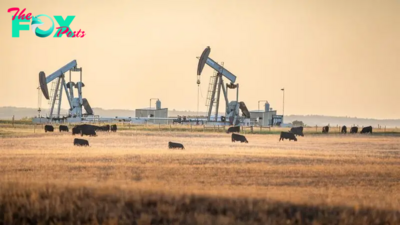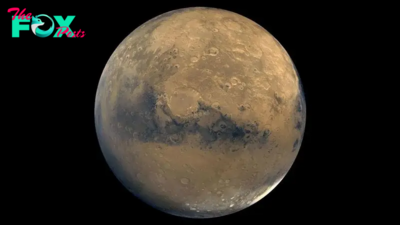Science
Scientists finally know why ultraviolent superstorms flare up on Uranus and Neptune
Scientists have uncovered the secret ingredient fueling supercharged storms on Uranus and Neptune: methane.
Uranus and Neptune are the outermost planets of the solar system and are known as ice giants because they are rich in water. Scientists understand very little about these distant realms. But after the Voyager 2 spacecraft flew by them in the 1980s, scientists realized that these worlds occasionally host massive, short-lived storms. The violent-but-fleeting storms pop up every few years and are so big you can see them (with a telescope) from Earth.
Researchers have long wondered why the storms on these planets are so unpredictable. Now, a team of astronomers has proposed that methane may hold the key to controlling these storms.
To power a storm, heat must rise from a planet's warm interior to its surface. There, the heated gas begins to cool, which can cause turbulence and trigger storm formation. But the interiors of these planets are always warm, and the outer surfaces are always cool, so why don't storms occur all the time?
In a paper published to the preprint database arXiv on Sept. 3, the team pointed out that methane is the third-most abundant molecule, after hydrogen and helium, in the deep atmospheres of both worlds. Normally, methane doesn't do much except float around in the atmosphere, but the researchers used modeling to show that in certain circumstances, this simple hydrocarbon can dramatically alter heat transfer within the planet.
Methane usually exists as a gas, but in the upper regions of these ice world atmospheres, methane may condense, forming droplets that fall to lower altitudes, the study authors proposed. There they reheat and rise again, completing a cycle similar to the water cycle on Earth. Once the atmosphere becomes too saturated with methane, a stable layer forms. Like a wet blanket, the stable layer keeps heat from reaching the surface, which in turn suppresses storm formation.
These layers are most commonly found throughout all latitudes of Neptune, and around the equator and mid-latitudes of Uranus. But the poles of Uranus don't have enough methane to create a stable saturated layer. As a result,heat can easily rise to the surface and drive larger storms, the study found.
-

 Science19h ago
Science19h agoPolaris Dawn Sets New Space Altitude Record—and There’s More to Come
-

 Science21h ago
Science21h agoGreenhouse gas 80 times more potent than CO2 is rising in the atmosphere — and fast
-

 Science21h ago
Science21h agoChina plans to build moon base at the lunar south pole by 2035
-

 Science21h ago
Science21h ago'Space trash' will lead us to intelligent aliens, Harvard astrophysicist Avi Loeb says
-

 Science1d ago
Science1d agoSpace photo of the week: Space X's Polaris Dawn astronauts 'touch the void' on 1st-ever private spacewalk
-

 Science1d ago
Science1d ago'I have never written of a stranger organ': The rise of the placenta and how it helped make us human
-

 Science1d ago
Science1d agoThe moon might still have active volcanoes, China's Chang'e 5 sample-return probe reveals
-

 Science2d ago
Science2d agoScience news this week: 'Thorin' the last Neanderthal and a 'smiley face' on Mars






















